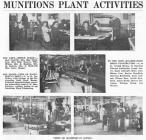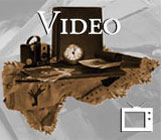1
In December 1936, the President of the Cockshutt Plow Company, C. Gordon Cockshutt, transferred his brother, William Ashton Cockshutt, to the Frost & Wood Company. W. Ashton had been working in Winnipeg as a Western Sales Manager and was promoted to Assistant General Manager at Frost & Wood plant.In 1939, General Manager J.E. Ruby became Frost & Wood's President and transferred to Brantford. Having been with the company since 1884, Ruby remained President of the Frost & Wood Company until his death in 1947.
With the position vacant, W. Ashton became General Manager of Frost & Wood. He quickly adjusted to factory life and was well liked by his colleagues and staff at the factory. Under his management, Frost & Wood would face its most successful, productive and challenging years.
3
There were numerous shortages during World War I for companies like Frost & Wood and Cockshutt. Labour was in short supply as were raw materials needed to manufacture equipment. The Cockshutt Plow Company did produce a small number of wagons for the Army, while Frost & Wood manufactured artillery shells.Overall, these types of companies did not seem to be as involved in the war effort during World War I as they would be decades later. However, once Canada entered World War II, industrial companies pushed hard to take part in the action.
4
Put Victory First - Buy Victory Bonds25 April 1944
Smiths Falls, Ontario, Canada
 Credits:
Credits:Heritage House Museum
5
On September 10, 1939, Canada followed Britain and declared war on Nazi Germany. Every man, woman and child pitched in, and factories rapidly converted over to war time industries.Cockshutt and Frost & Wood were no exception. The Canadian Government ordered the Cockshutt Plow Company to begin manufacturing equipment for the air force, while Frost & Wood converted to a munitions factory. However, war meant the need for grain, corn and wheat was more important than ever. Both companies would continue to produce farm machinery like reapers and flax-lifters.
In 1939, 413 employees worked for Frost & Wood, paying around $432,500 in wages. Only a few years later, the company employed 1,200 people at the peak of war time production.
6
Hand Grenades - Mostly Woman Made24 June 1944
Smiths Falls, Ontario, Canada
 Credits:
Credits:Heritage House Museum
7
In addition to the building beside Frost & Wood, the Malleable owned another building in the north end of Smiths Falls. When hard times hit the company in the 1920s, the Malleable shut down production at this north end location, and during the 1930s, the building was left empty except for a few vagrant tenants.When war was declared, Smiths Falls Town Council ordered repairs to this building, known as the Number 2 Plant or the North End Plant. Town Council then rented it out to the Cockshutt Plow Company, who then converted it over for war time production.
8
Munitions Plant Activities23 December 1943
Smiths Falls, Ontario, Canada
 Credits:
Credits:Heritage House Museum
9
W. Ashton Cockshutt recognized the company's need to acquire the North End plant. The number of employees at the factory was going to triple and the amount of equipment being produced at the Frost & Wood factory meant there was an increased need for extra space at the Chambers street location.The North End Plant opened in 1941 and soon after the company received a contract to produce No. 27 bailers, a vehicle designed to carry ammunition for the 25-pound guns.
Originally the contract called for the factory to produce four of these carriers per day, but was upped to sixteen per day. By the end of the war, the company reported manufacturing and shipping 6,000 units to places like Europe, Prague, Egypt and, Australia.
The plant also produced six-ton semi trailers, pole trailers, portable bridges, and 20 m/m anti-air craft trailers.
11
The North End Plant was technically a Cockshutt run plant. Though Frost & Wood employees worked at the plant, every piece of machinery that left the plant had "Cockshutt" stamped on it.Note at the 39-second mark, a woman working on a piece of machinery has "F&W" embroidered on the back of her overalls in orange letters.
12
The North End PlantCirca 1944
Smiths Falls, Ontario, Canada
 Credits:
Credits:Canadian Industrial Heritage Centre
13
While the North End Plant focused exclusively on war production, Frost & Wood continued to manufacture farm machinery as well as munitions.Under government contract, Frost & Wood continued to manufacture desperately needed mowers and reapers to ship overseas. With most of Europe's men engaged in war, farm machinery was needed to compensate for the lack of man power needed to produce food for civilians and military personnel alike.
Frost & Wood won a government contract to produce 100,000 No. 36 hand grenades per month. Additionally, they were to produce artillery shells and chests to hold ammunition, known as caissons. During the war, Frost & Wood was the largest producer of munitions in Eastern Ontario.
14
Workmen Assemble Hand Grenades1 April 1941
Smiths Falls, Ontario, Canada
 Credits:
Credits:National Library & Archives

